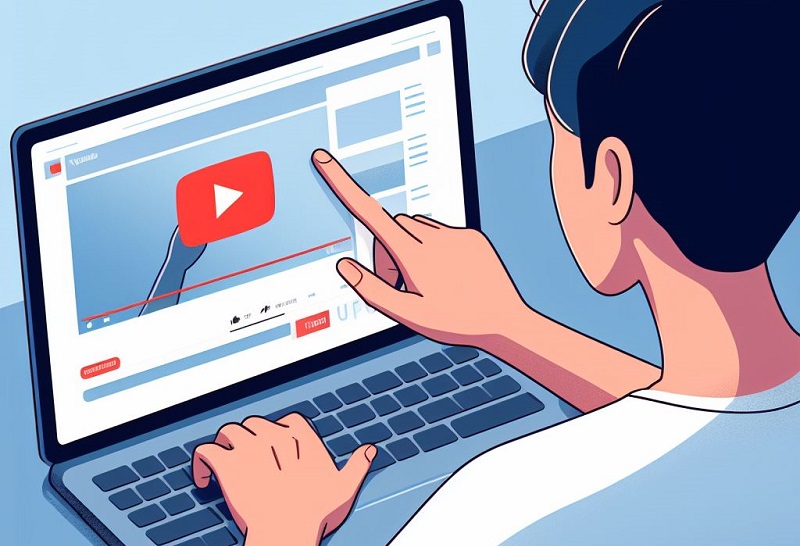Whether your business is small or large, advertising is essential to grow your business and profits quickly. This comprehensive article provides paid advertising tips for beginners and how to put your ad campaigns to work. It is a long article but worth your time of reading.
If you are a beginner, you often feel lost and unsure where to start. There are many platforms, channels, and strategies. Which is the best place to start? What are the basic principles to understand? How to make your advertising campaigns effective? Are you worried about wasting your money?
You might want the answers. This article answers all the questions and provides you with research-based practical tips to put the paid advertising campaigns to work for you. You will also learn how to measure your ROI and improve your campaigns to make them more effective.
Paid advertising can help your business reach a wider audience than you could through organic or other free methods. By targeting your ads to specific demographics and interests, your can improve your brand awareness, increase sales and build your customer base.
- Practical Paid Advertising Tips for Beginners
- 1. The Basics of Paid Advertising
- 2. Effective Paid Advertising Strategies
- 3. Optimizing Paid Advertising for Your Business Growth
- 4. Advanced Techniques and Strategies for Paid Advertising
-
5. Evaluating the Value of Paid Advertising
- Assessing the Return on Investment (ROI) of Paid Advertising
- Measuring the Effectiveness of Paid Advertising Efforts
- Comparing the Performance of Paid Ads Across Different Platforms
- Understanding the Role of Paid Advertising in Business Growth
- Identifying Successful Paid Advertising Strategies and Campaigns
- More Guides and Tools
Practical Paid Advertising Tips for Beginners
Now, let’s start from the basics, the fundamental knowledge you need to have. The tips and tricks in this article are applicable to any advertising platforms.
1. The Basics of Paid Advertising
Types of Paid Advertising
You can do advertising on a wide range of platforms using many methods. Beginners can look up many types of advertising that suit their specific goals and target audience. Below are the popular paid advertising methods for beginners to consider:
- Search Engine Marketing (SEM): In this method, you place ads on search engines like Google and Bing. This method effectively reaches your products or services to search engine users.
- Social Media Advertising: If you want to reach a highly engaging audience, you can use social media platforms like Facebook, Instagram, and Twitter for advertising. The ads can target your relevant demographics, interests, behaviors, and specific activities.
- Display Advertising: Display ads are banner ads you can run on many websites and apps. You can use them for brand awareness and driving traffic to your website.
- YouTube Advertising: If you want to effectively convey your brand messages, product demonstrations, and testimonials, YouTube ads are good.
- Native Advertising: A native ad is a type of advertising designed to blend in with the surrounding content on a website or app. It is more likely to be seen by visitors. Such ads can be used for your brand awareness and lead generation.
- Retargeting Advertising: Such campaigns can target those who have previously visited a website or app. They encourage them to return or complete a purchase.
They are some of the common methods of advertising beginners can do. Now let’s understand how paid advertising gives benefits to a business like yours.
Benefits of Paid Advertising
Paid advertising can provide several benefits for businesses of all sizes to achieve their marketing objectives and drive growth. It can expand reach to a wider audience and use targeting options and comprehensive data and analytics for tracking campaign performance.
It also offers complete control over ad spend, choosing suitable ad methods, direct linking to conversions and sales, and outrank competitors. Additionally, A/B testing can be used to compare your ad performance. Paid advertising can be integrated with marketing automation and CRM systems to enhance efficiency and customer engagement.
Your campaigns can also enhance brand awareness and reputation by showcasing your products, services, and values. However, it’s important to select the most suitable channel for your advertising success.
Choose the Right Channel for Paid Ads
Choosing the right channel for your ads is crucial and it should be aligned with your marketing objectives to maximize your return on investment (ROI) and profits. You should include the following steps in choosing your channel:
- Know your ideal customer’s demographics, interests, behaviors, and online activities. This will help you know the channels where they are most likely to interest in your ads.
- Set your marketing goals. Do you want to boost your brand awareness, generate leads, drive website traffic, or increase sales? Have your clear goals.
- Determine your budget.
- Research on different platforms and find out which ones offer the most precise targeting options for your audience segments.
- Analyze the average cost-per-click (CPC) and conversion rates for different advertising channels. This will help you find out the potential costs and ROI for each channel.
- Do you have the required creative assets, such as images, videos, or ad copy for the chosen channel(s)? Prepare for them.
- Check if the channels align with your overall marketing strategy. Can they integrate with your site, social media presence, and other marketing strategies?
- Don’t be afraid to experiment with a channel or more so that you can identify which one of them generates the best results.
- If you’re a newbie in paid advertising, you can also consult with a experienced marketing professional or agency. It can help you in implementing effective campaigns.
Now, you can start your experiments with the chosen channel(s) suited to your goals and budget.
Set Up Your Paid Advertising Campaign
For setting up an ad campaign, you need careful planning, strategic implementation of the planning, and regular optimization. In the above, we have discussed the importance of clearly defining your goals and target audience, choosing the right channels, and setting your budget.
If those things are ready, you can set up your advertising campaign. Start with a channel with a small budget. Don’t invest a big amount in the beginning. Remember, it is experiment time. Follow these steps:
- Your creatives (text or visual) should be visually appealing, informative, and resonate with your audience. Create it as per the channel’s format and character limits. Use high-quality images or videos that capture attention.
- Use the campaign parameters, including start and end dates, budget, bidding strategy, and targeting options.
- If the advertising channel needs some keywords, conduct a thorough keyword research with a keyword tool for relevant terms and phrases your target audience is searching for.
- You can test different ad variations if you want to know the most effective creatives.
Measure the Performance of Your Ads
Measuring the performance of your ads is crucial. It can help you to determine the effectiveness of your paid advertising campaigns and improve them. Consider the following metrics in the analytics tool:
- See how many impressions a particular campaign gets.
- See how many clicks you get. Click-through rate (CTR) is calculated by dividing the number of clicks by the number of impressions. A higher CTR tells your ad is good.
- Check how many conversions it can generate. A higher conversion rate means your ad effectively generates more sales or leads.
- If the channel uses Cost-per-click (CPC) model, see the average cost you pay for each click. A lower CPC tells that your ad is efficient and attracts high-quality clicks.
- If your channel uses Cost-per-acquisition (CPA) model, check the average cost you pay to acquire a new customer or conversion. A lower CPA indicates that your ad campaign is generating conversions at a cost-effective rate.
- Return on ad spend (ROAS) tells how profitable your campaign is by comparing the revenue generated and your total ad spend.
- Engagement rate such as time spent on page, bounce rate, and social media interactions indicates how your audience interact with your ad. These metrics can help you improve your ad creatives and landing pages of the ads.
- By analyzing the above metrics, you can see the performance of your ad campaigns. Use this data to improve your advertising campaigns and maximize your return on investment.
You can learn how experienced paid advertisers run their campaigns successfully. The trick is this: find a freelance ad manager related to your ad channel. Then, hire him to set up and manage your campaigns. Then, see how he did it and how was the ad performance. You can learn and replicate easily from him.
| Find an ad manager from Fiverr
You can also use them as your full time ad manager.

2. Effective Paid Advertising Strategies
Now, let’s learn to apply effective strategies to your ads.
How to Target the Right Audience Effectively
Effective targeting is a must of a successful paid advertising campaigns Try to reach the right audience with the right message at the right time. It can maximize your ROI and achieve your marketing goals. Follow these steps for this purpose:
- Create detailed buyer personas to get a holistic understanding of the target audience. Not only you understand their demographics, interests, and behaviors, but also try to understand their online habits and pain points.
- Find out what the advertising platform offers targeting options, such as demographic targeting, interest-based targeting, behavioral targeting, and location targeting. Are those options useful for your targeting?
- If you do search engine marketing (SEM) campaigns, you need to identify relevant keywords through keyword research to include in your ad copy and targeting strategies.
- You can implement retargeting strategy to encourage them to return or take action.
- Experiment across different platforms to reach a wider audience. You can target them based on demographics and interests on social media and retarget them on search engines later.
- You can exclude existing customers to help you avoid wasting ad spend.
- Try to know any new targeting options and trends available in the platform you are using.
- Monitor the audience engagement regularly. It helps you to avoid targeting the same individuals too frequently.
- Test different targeting combinations and strategies to find the most effective approach.
Use Compelling Ad Copywriting Techniques
They are the secret tips for creating your ads that capture attention, make relevance, and enhance conversions. Include the following techniques when writing a persuasive ad copy:
- In your copy, highlight the benefits your product or service can bring them. Address their pain points, and show how your product can solve your problems.
- Use strong headlines to grab their attention. Use strong verbs, intriguing questions, or benefit-driven statements.
- Use simple, straightforward language.
- Create a sense of urgency with limited-time offers, discounts, or exclusive access.
- Use calls to action. Use strong verbs like “Shop Now,” “Sign Up,” or “Download”.
- Use emotional triggers to tap into happiness, excitement, or fear. It will appeal to their desires, aspirations, and motivations.
- Speak directly to your audience using “you” and “your”.
- Proofread your copy carefully to avoid mistakes.
Choose the Best Ad Platforms (e.g. Google Ads, Facebook Ads)
Choosing the best ad platforms can maximize your ROI. Read the following tips to choose your best ones:
- Based on the factors such as demographics, interests, behaviors, online activities, and device usage of your audience, check the platform’s ability to target your ideal customers effectively.
- Look into average cost-per-click (CPC) or cost-per-mille (CPM) rates of the platform. Check if they provide your desired level of control over ad spend and flexibility in bidding strategies.
- Check if the platform provides formats for text-only ads, image ads, video ads, and carousel ads as you require.
- You can even evaluate how well the advertising platform can integrate with your website analytics, customer relationship management (CRM) system, and email marketing tool.
- Read industry reports, case studies, and user reviews about the effectiveness of each platform.
- You can seek expert advice and consultations to find the best platforms suited for your paid advertising campaigns.
Strategies for Tracking and Analyzing Ad Performance
Effective tracking and analysis of our ad performance help to improve your advertising campaigns and increase your profits. Beyond basic metrics like impressions, clicks, and conversions, you can use these advanced strategies:
- Use Custom Attribution Models. They can help you to distribute conversion credit across multiple touchpoints. This helps you understand how each channel contributes to conversions.
- Use advanced segmentation and divide your audience into specific groups based on demographics, behaviors, interests, or other relevant factors. This will enable you to analyze performance and trends among distinct segments.
- Apply Event Tracking and Path Analysis. Event tracking can track specific actions visitors take, such as product views, form submissions, or video engagement. Path analysis shows the steps they take before converting, telling how effective your conversion funnel is.
- Use data-driven remarketing techniques. This strategy can re-engage potential customers to increase the conversion rate.
- Conduct A/B Testing and Multivariable Testing to identify the most effective ads.
- Use an ad fraud detection tool or technique to identify and filter out invalid traffic.
If you are looking for an advertising course, Udemy offers you several online video courses on different ad platforms and models:

3. Optimizing Paid Advertising for Your Business Growth
Use Different Ad Formats (e.g. Text Ads, Display Ads)
In paid advertising, you can use different ad formats. Here are some tips for optimizing paid advertising using different ad formats:
- Text Ads: Write attention-grabbing headline with clear and concise description that highlights your product or service’s benefits. You need to use strong verbs for calls to action. Use relevant keywords in the ad. Use the power of ad extensions if you are using platforms like Google Ads. But don’t forget to ensure that your ad is optimized for mobile devices.
- Display Ads: Use high-resolution image, engaging graphics, or captivating video. Test with different ad formats, like banners, interstitials, and native ads, to determine which ad performs best. Use the targeting capabilities of the platform to reach your specific audience segments.
Maximize the Potential of PPC Advertising
Pay-per-Click advertising is a powerful tool to reach your marketing goals quickly. With your clear goals and target audience, select the right PPC platform, set a budget, and create compelling ad copy. You can do PPC advertising on platforms like Google Ads and Bing Ads.
PPC advertising also needs to optimize your landing pages to enhance conversions. You can do proper targeting and segmentation. You can also monitor the performance of your campaigns and make adjustments as needed.
—
If you want to enrol in a PPC advertising course for an expert’s guide, click the following link:
| Top PPC advertising courses on Udemy
—-
Harness the Power of Social Media Ads
Social media is a powerful platform for you to reach your target audience, engage with them, and drive conversions. There are many social media platforms, including Facebook, Twitter, Instagram, LinkedIn, and SnapChat. Select the best platforms for you. They are precise targeting.
Create your ad copy and visuals that resonate with your target audience. Determine an appropriate budget for your ad campaigns and use your bidding strategy. You can conduct A/B tests and monitor the ad performance.
With social media advertising, you can also monitor conversations and trends. Engage with users, respond to comments and questions, and participate in relevant discussions.
You can also connect with relevant social media influencers who align with your target audience. You can use them to promote your products or services. With social media, you can use new targeting options, ad formats, and creative approaches to make your campaigns effective.
—
Learn social media marketing and advertising techniques. Check these books:
—
Success Tips for Startup Paid Advertising Efforts
Your advertising success requires a combination of strategic planning, effective creatives, and data-driven optimization. Have a clear goal and target audience. You need to choose advertising platforms right for your audience and campaign goals. Then, set a realistic budget and bidding strategy.
Earlier, you have learnt that you need to craft compelling ad copy and creatives. You also have to optimize your landing pages. Improved landing pages get increased conversions.
Apply proper audience targeting and segmentation techniques. With retargeting strategies, your ads follow wherever your target audience go online.
Continuously monitor your ad performance and optimize your ads. Experiment with different ad formats. You can also consider partnering with experienced paid advertising agencies or consultants. Their strategic guidance can help to optimize your campaigns, and maximize your paid advertising ROI.
—
Do you want to get a professional certificate on Google Ads? If so, check this Coursera course:
—

4. Advanced Techniques and Strategies for Paid Advertising
Implementing A/B Testing for Ad Campaigns
A/B testing can help in optimizing ad campaigns and maximizing their effectiveness. With it, you compare two versions of an ad and determine which one performs better to make an informed decision about your ad strategy.
- Create two versions of an ad, each with a different variation.
- Most advertising platforms provide built-in A/B testing tools. Use them to create your test groups and allocate traffic to each version of your ad.
- Check the performance of each ad with the platform’s analytics tool. See metrics like impressions, clicks, conversions, and CTRs. Look which ad version performs better.
- Based on the results, decide about your ad strategy. Now, you can implement the strategy of the winning variation across your campaigns.
Using Google Analytics for Detailed Insights
Every advertising platform has their own analytics tools. However, if you want to view all data of different platforms in a single tool, Google Analytics is a powerful tool you can use. You can connect Google Analytics with them and track all your campaigns.
- Link your platform’s account to your Google Analytics property. The account may be of Google Ads, Microsoft Advertising, and social media platforms. Sign up first if you don’t already have a Google Analytics account.
- Enable auto-tagging if your advertising platform has such a feature.
- Set up your goals of conversion tracking in Google Analytics, such as generating leads, driving website traffic, or increasing sales.
- Create custom reports to track specific metrics and segments.
- Then, you can analyze which advertising platforms or channels are most effective in driving traffic and conversions.
You can also track visitor behaviour and engagement in your site and measure your campaign ROI and cost-per acquisition. You can even identify landing page issues.
Optimizing Ad Performance on the Google Display Network
Optimizing the Google Display Network (GDN) ads requires a strategic approach. You need to define your clear goals and target audience, use effective targeting options, and create compelling ads.
In addition, you need to select ad placements and networks carefully and control ad scheduling for when to display or not. You should also implement remarketing and retargeting strategies.
Don’t forget to review the performance of your ads. It helps to optimize them to improve the performance. Use its automation tools to assist you for bid optimization, scheduling and performance monitoring.
Exploring Different Advertising Models and Platforms
Exploring different advertising models and platforms can help you find the most effective ways for advertising. You should evaluate the strengths and limitations of those models and platforms and compare them.
Conduct experiments with different models and analyze the performance data to identify the best options for advertising. You should take A/B testing and multivariable testing and continuously optimize and improve your advertising strategy.
Enhancing Ad Performance through Search Engine Marketing (SEM)
Search Engine Marketing (SEM) requires effective strategies to improve your paid campaigns. You can advertise with the Google Ads or Bing Ads platform. For this, you need to identify relevant and high-value keywords.
If you run your ad campaigns through Google Ads, you can conduct keyword research using Google Keyword Planner in your account. Alternatively, you can also use SEMRush for this purpose.
Write persuasive ad copy highlighting your unique selling points (USPs). Don’t forget to use strong calls to actions. Utilize ad extensions like sitelinks, callouts,, and structured snippets to enhance ad visibility. Use their targeting options to reach the specific audience you need.
Search engine advertising needs to optimize and improve the landing pages of your ads. They should offer a value proposition and guide the traffic towards your desired action. Monitor your ad performance and optimize your bidding strategies.
Try with different ad formats and apply retargeting strategies. You need to monitor your PPC campaigns regularly and see for ways to improve.
If you want to enrol in a PPC advertising course for an expert’s guide, click the following link:
| Top PPC advertising courses on Udemy
| Best Google Ads courses

5. Evaluating the Value of Paid Advertising
Paid advertising, when done correctly, can be a valuable tool for businesses of all sizes to reach their target customers, generate leads, and drive sales. However, it’s crucial to enhance the effectiveness of the campaigns to ensure they’re delivering a positive ROI.
Assessing the Return on Investment (ROI) of Paid Advertising
The ROI measures the financial return from your paid advertising campaigns. It is calculated by dividing the total revenue generated from it by the total cost of the campaigns.
Formula for ROI:
ROI = (Revenue Generated from Paid Advertising) / (Cost of Paid Advertising Campaigns)
Measuring the Effectiveness of Paid Advertising Efforts
Look into several key metrics to measure the effectiveness of your campaigns. They include:
- Impressions: The number of times an ad is displayed.
- Clicks: The number of times users click on an ad.
- Conversions: The number of times they take your desired action.
- Cost-per-click (CPC): The average cost of each click on an ad.
- Cost-per-acquisition (CPA): The average cost of acquiring each new customer.
They are used to track the performance of your advertising campaigns and identify areas for improvement.
Comparing the Performance of Paid Ads Across Different Platforms
Different advertising platforms are not created equally. For example, Google Ads is effective for reaching people actively searching for products or services, while social media advertising is better for reaching users based on their interests and demographics.
It’s important to compare the performance of the ads across different platforms to determine which ones are most effective for you.
Understanding the Role of Paid Advertising in Business Growth
Advertising can play a significant role to grow your business by:
- Increasing brand awareness
- Generating leads
- Driving sales
Identifying Successful Paid Advertising Strategies and Campaigns
If you want to be successful advertising strategies and campaigns, you should understand several key characteristics, including:
- Clear goals and objectives that are aligned with the overall marketing strategy of your business.
- Targeted audience who are most likely to be interested in your offers.
- Compelling ad creatives that effectively communicate the value proposition of your product or service.
- Effective bidding strategies that your campaigns are reaching the right audience at the right time.
- Continuous optimization based on data and performance metrics.
By following these principles and tactics, you or even a beginner can create and run successful paid advertising campaigns that bring profits.
More Guides and Tools
If you want to learn more specific lessons of advertising, check these selected guides:
| Facebook marketing books
| Twitter marketing books
| LinkedIn marketing books
| YouTube marketing books
| Best books on advertising
Advertising tools
Kepla: A multichannel ad management tool that helps you create, manage, and monitor your ads to boost your advertising ROI.
I hope that this article helps beginner advertisers to learn the required tips and tricks to start their advertising journey and ensure them to earn profits from their ads. Please share this page with your social media posts or leave a comment below.
Disclosure: We are partners or associates of Amazon and other top brands. We may earn a small amount from qualifying purchases without increasing the price. Please read our full affiliate disclosure here.
Ibochouba Singh is a content writer and reviewer with a passion for writing about digital marketing and tech gadgets, including software tools and new tech gadgets. He has over 15 years of experience writing for several consumers and clients, including tech startups, marketing agencies, and software companies. He has written many articles and product reviews for many websites, including nigcworld.com and buywin.in.

